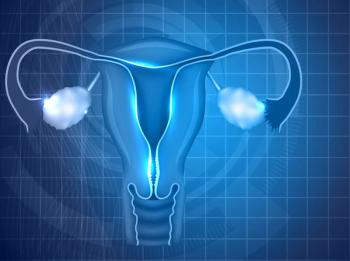
Overview of the ASCO Gynecologic Oncology Poster Session
The University of North Carolina has multiple posters accepted to the Gynecologic Oncology General Poster Session at this year’s ASCO meeting. Let’s take a virtual walk through several of these abstracts.
The University of North Carolina has multiple posters accepted to the Gynecologic Oncology General Poster Session at this year’s ASCO meeting (disclaimer: UNC is my home institution). Let’s take a virtual walk through several of these abstracts.
The first poster we’ll discuss takes a close look at an important question related to endometrial cancer survivors and obesity. Obesity is known to be a well-established risk factor for the development of endometrial cancer. Furthermore, obesity is associated with decreased survival, worse surgical outcomes, and worse quality of life for patients with endometrial cancer. The purpose of this study was to evaluate the level of knowledge that endometrial cancer patients have about the relationship between obesity and their cancer. A survey was sent out to 233 endometrial cancer patients who had completed treatment and were free of disease; 46% returned the survey. The vast majority (92%) of patients correctly identified obesity as a risk factor for endometrial cancer. Patients also had good to moderate awareness when self-identifying their own body mass index (BMI) category, with more than 88% of patients stating they were either “a little” or “a lot” overweight.
Despite this, only half (52%) of patients reported that they were trying to lose weight after their diagnosis, with possible barriers including lack of desire (37%), lack of need (23%), not knowing how (14%), lack of time (12%), and lack of money (20%). Only 34% of patients stated that they were advised by a gynecologic oncologist to lose weight. This study is important because it identifies areas for much needed improvement in the education and counseling of endometrial cancer patients. These educational steps for patients should be relatively easy to implement and may have significant impact on patient outcomes.
Let’s stay on the topic of obesity and endometrial cancer for our next poster. This study looked at the relationship between obesity and perioperative complications after robotic surgery for endometrial cancer. Robotic surgery is often used in the management of endometrial cancer, although there have been some concerns regarding its use in obese women, as the positioning required for pelvic surgery can worsen obesity-related changes in respiratory physiology.
To address this question, a retrospective review of 1,035 patients from two institutions was performed, examining patients with a BMI greater than 30 who received robotic surgery for endometrial cancer between 2006 and 2012. The primary outcome of this study was pulmonary complications. The study found that there were overall low pulmonary complication rates and (perhaps surprisingly) that there were even lower pulmonary complication rates in obese patients. Increasing age was associated with complications. On multivariable analysis, BMI was not associated with increased risk of pulmonary, or any cause, complications. Forty-four patients converted to open laparotomy, with only two due to “body habitus.” Enlarged uterus (17) or adhesions (10) were the most common reasons for conversion to open surgery.
The authors concluded that the “vast majority” of patients who are obese can safely tolerate robotic gynecologic surgery. Some caveats in this retrospective review are that there may have been a patient selection bias with extremely obese patients, and patients with worse obesity-related pulmonary function may have not been offered robotic surgery because of concerns of perioperative complications.
The last study we will discuss is a population-based analysis using the Surveillance, Epidemiology, and End Results (SEER) Program database. This study aimed to evaluate how mortality changed over time for endometrial cancer. More than 62,500 women treated between 1980 and 2005 were evaluated for treatment outcomes. Overall, women with type 1 endometrial cancer had an overall survival (OS) of approximately 80%, and type 2 and sarcoma histologies had an OS of approximately 45%. On multivariable analysis, earlier year of diagnosis, older age at diagnosis, black race, unmarried status, and advanced disease stage were all risk factors for increased disease mortality and all-cause mortality. Receipt of total hysterectomy and radiotherapy were associated with decreased risk of all-cause mortality. One of the key findings from this paper is that although survival has increased over time for women with endometrial cancer, racial disparities persist.
Newsletter
Stay up to date on recent advances in the multidisciplinary approach to cancer.

















































































